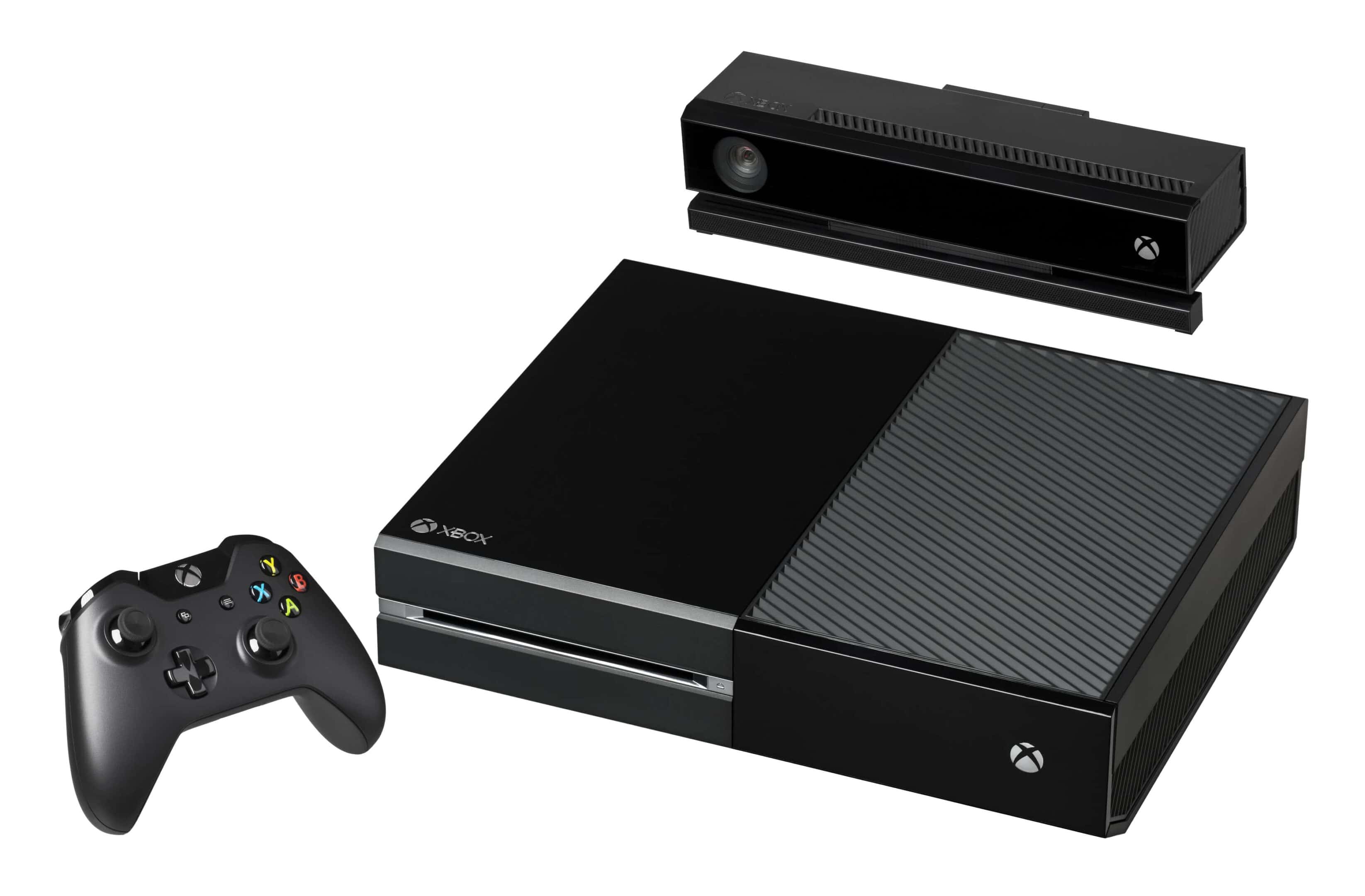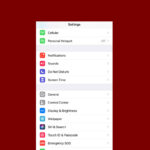Microsoft released the Xbox One, its third-generation gaming console, on November 22, 2013. The Xbox One was a significant milestone for the Xbox brand, with a strong emphasis on multimedia features, enhanced online integration, and the second iteration of the Kinect motion sensor.
Despite a rocky launch, the Xbox One set the stage for many features that are now standard in modern consoles. Early indicators of the industry’s direction, such as seamless TV integration, subscription services like Xbox Game Pass, and cloud gaming, were a major focus. Although the Xbox One has now been replaced by the Xbox Series X|S, it played a pivotal role in shaping the current generation of gaming.
A Focus on “All-in-One” Entertainment”
The Xbox One was not only supposed to be a gaming console, but also as the centerpiece of all home entertainment. Key features reflecting this were:
- TV Integration: The Xbox One could smoothly switch between watching live television and playing games.
- Voice Commands and Kinect: The updated Kinect sensor enabled voice and gesture controls for navigating menus and certain in-game actions.
- Non-Gaming Apps: A range of popular streaming apps like Netflix, Hulu, and Amazon Video were available at launch.

Initial Launch Controversy
During its reveal and initial launch, the Xbox One faced mixed reactions due to several contentious points.
- Always-Online Requirement: Early concepts required a constant internet connection, leading to privacy and accessibility concerns. This was later reversed.
- Used Game Restrictions: Plans to limit the ability to resell used discs were heavily criticized and ultimately scrapped.
- Higher Price Point: At $499, the Xbox One was $100 more expensive than its direct competitor, the PlayStation 4.
Key Specifications
Here’s a table outlining the technical specifications of the Xbox One at launch:
| Specification | Detail |
|---|---|
| CPU | 8-core x86-64 AMD “Jaguar” CPU @ 1.75 GHz |
| GPU | AMD Radeon 7000 series-based graphics, 1.31 TFLOPS |
| Memory | 8 GB DDR3 RAM |
| Storage | 500 GB Hard Drive |
| Optical Drive | Blu-ray Disc, DVD |
| Connectivity | HDMI in/out, USB 3.0, Gigabit Ethernet, Wi-Fi 802.11n |
Evolution and Legacy
The Xbox One has significantly evolved since its 2013 launch. Major updates and hardware revisions include:
- Removal of Kinect Requirement: Due to its limited adoption, Kinect was eventually unbundled and made optional.
- Xbox One S (2016): A slimmer, more powerful version with 4K video output and HDR support.
- Xbox One X (2017): The most powerful console at the time, offering true 4K gaming experiences.
Origins and Development
The Xbox One, launched by Microsoft, marked a significant step in the evolution of console gaming as part of the eighth generation. As predecessor to the original Xbox and the subsequent Xbox 360, it was anticipated to offer cutting-edge performance and interactive entertainment.
Pre-Release and Announcements
The journey of the Xbox One began long before the public got its first glimpse. Behind closed doors, Microsoft referred to the early hardware for the Xbox One as “Project Scorpio.” By mid-2012, development kits, codenamed “Durango,” were already in the hands of game developers. This preparation set the stage for a grand announcement at the Electronic Entertainment Expo (E3), one of the most awaited events in the gaming community.
During the E3 2013 event, Microsoft officially unveiled the Xbox One to the world, capturing the attention of gamers and media alike. The stage was set by Phil Spencer, who would later become the head of Microsoft’s Xbox division, the face of the brand, and a pivotal figure in the platform’s continued development.
Design and Specifications
Design: Sleek design was a core focus, aiming to blend in with home entertainment systems. The Xbox One’s aesthetics represented a modern and sophisticated look, opting for a black finish which served as a backdrop for the console’s key features.
Controller: The Xbox controller went through more than 40 design improvements. Microsoft sought a balance between familiarity and innovation, refining the ergonomics and tactile responses for enhanced gaming experiences.
Hardware: Central to the Xbox One’s capabilities was the advanced hardware:
- CPU: An 8-core AMD accelerated processing unit, providing the necessary power for high-end gaming and multitasking.
- GPU: Coupled with a powerful graphics processing unit designed to handle the console’s ambitious visual goals.
Features:
- Kinect: Microsoft continued to push Kinect technology, offering voice commands and motion tracking to control the console and games.
- Cloud computing: Emphasized for its potential to augment processing power and provide new gaming experiences.
By combining these specs, Microsoft positioned the Xbox One not only as a gaming console but as an all-encompassing media center. The Xbox One set out to redefine entertainment, converging games, TV, and online content.
Launch Details
The Xbox One made a splash with its highly anticipated release, offering a new level of gaming experience to enthusiasts worldwide.
Release Date and Price
Release Date: The official launch date of the Xbox One was November 22, 2013.
Price: On release, the Xbox One was priced at $500 USD in the United States.
Market Availability
At launch, the Xbox One was available in several key markets, spanning across different continents. Here is a quick glance at the availability:
- North America: Available in the USA and Canada.
- Europe: Countries such as the UK and others in Europe had access to the console from day one.
- Australasia: Australia joined in the initial release, providing gamers Down Under the opportunity to get their hands on the console.
- South America: Brazil was also part of the initial rollout.
Japan, well-known for its vibrant gaming culture, had to wait a bit longer for the Xbox One to hit the shelves. The console’s sales figures and availability expanded over time post-launch, eventually reaching a worldwide market.
System Features and Performance
The Xbox One lineup, including the original Xbox One, Xbox One S, and Xbox One X, boasts impressive features and performance enhancements. They provide a comprehensive gaming experience while doubling as a multimedia center, with a focus on connectivity.
Gaming Experience
The Xbox One takes gaming to new heights with a rich library of titles, including exclusives like Forza Motorsport. The Xbox One S provides a slight performance boost over its predecessor, while the Xbox One X pushes the boundaries further with more robust hardware, supporting 4K gaming and enhanced graphical fidelity for supported games. Both consoles offer backward compatibility, allowing players to enjoy an extensive game catalog spanning previous Xbox generations.
Performance:
- Xbox One: Standard gaming at 1080p resolution.
- Xbox One S: Enhanced with HDR support, better for 1080p TVs.
- Xbox One X: High-end performance with 4K resolution capabilities and increased storage and memory for smoother gameplay.
Features:
- Backward Compatibility: Play games from previous Xbox versions.
- Xbox Game Pass: Access to a broad game library through a monthly subscription.
- Cloud Gaming: Stream games directly from the cloud with Xbox Game Pass Ultimate.
Multimedia and Connectivity
Xbox One consoles aren’t just about gaming; they serve as an entertainment hub for the entire household. They support streaming apps like Netflix and Amazon, allowing users to watch their favorite shows and movies in up to 4K resolution, given the right model. The addition of a 4K Blu-ray player in the Xbox One S and Xbox One X makes these consoles a one-stop shop for multimedia enjoyment.
Connectivity:
- Wireless: Connect to the internet without cables for a clean setup.
- Ethernet: For a more stable connection, plug directly into the router.
- Xbox App: Stay connected with friends, join parties, and play games from your smartphone.
Multimedia:
- 4K Support: Xbox One S and X enhance the visual experience with 4K and HDR.
- Blu-ray Disc: Watch movies using the built-in 4K Blu-ray player on the Xbox One S and X.
- Audio: Immerse yourself with DTS and Dolby Digital sound support.
Frequently Asked Questions
This section covers the most common inquiries about the Xbox One, providing clear and concise answers to help users understand the console’s features, lifespan, support, game library, and how it measures up against the newer Xbox Series X.
What are the differences between Xbox One and Xbox One S?
The original Xbox One, released in November 2013, was succeeded by the Xbox One S in 2016. The Xbox One S is smaller and can support 4K media playback. It also has enhanced hardware that allows for better performance and a built-in power supply.
What is the lifespan of an Xbox One console?
Typically, an Xbox One console can last for several years, though this depends on usage patterns and maintenance. Proper ventilation and regular cleaning can help extend its lifespan.
Will there be any new Xbox One updates or is it discontinued?
Microsoft has shifted focus to their newer consoles, but they still provide system updates and support for the Xbox One.
How does Xbox Series X compare to Xbox One?
The Xbox Series X, launched in November 2020, is significantly more powerful than the Xbox One, with a faster processor, better graphics, and quicker load times. It’s also designed to support higher resolutions and frame rates.
What are the top Xbox One games available now?
Top titles for the Xbox One include “Halo 5: Guardians”, “Red Dead Redemption 2”, and “The Witcher 3: Wild Hunt”. These games are praised for their engaging storylines and gameplay.
Can Xbox One still be used for next-gen games?
The Xbox One can play many new releases, though it may not support the enhanced features available on next-gen consoles like the Xbox Series X|S. Some newer games might also be exclusive to the latest generation of consoles.





